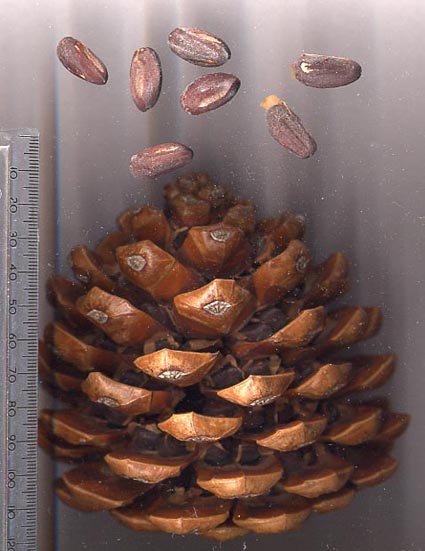|
Mole Blanco
Mole blanco ("white mole") is a type of mole of the cuisine of Mexico. This type of thickened sauce is prepared with a mixture of the ingredients lightly roasted, including: peanuts without skin, skinless almonds, sunflower, pine nuts and white corn tortilla. The elements fried in oil are sliced banana, chopped apple, blonde raisins, sliced onion, pieces of chile güero and bits of habanero chile. These ingredients are then ground in a blender or in a molcajete, adding milk, white chocolate, and water or broth, along with seasoning items like garlic, cloves, allspice, cinnamon strips and anise. An aromatic mole is obtained, with mildish flavour. See also * List of sauces The following is a list of notable culinary and prepared sauces used in cooking and food service. General * * * * * * * * * * * * * * * * * * * * * * * * * * (salsa roja) * * * – a velouté sauce flavored ... External links * http://www.food.com/recipe/mole-blanco-w ... [...More Info...] [...Related Items...] OR: [Wikipedia] [Google] [Baidu] |
Mole (sauce)
Mole, from Nahuatl mōlli (), meaning "sauce", is a traditional sauce and marinade originally used in Mexican cuisine. In contemporary Mexico the term is used for a number of sauces, some quite dissimilar, including mole amarillo or amarillito (yellow mole), mole chichilo, mole colorado or coloradito (reddish mole), mole manchamantel or manchamanteles (tablecloth stainer), mole negro (black mole), mole rojo (red mole), mole verde (green mole), mole poblano, mole almendrado (mole with almond), mole michoacano, mole prieto, mole ranchero, mole tamaulipeco, mole xiqueno, mole pipián (mole with squash seed), mole rosa (pink mole), mole blanco (white mole), chimole, guacamole (mole with avocado) and huaxmole (mole with huaje). Generally, a mole sauce contains fruits, nuts, chili peppers, and spices like black pepper, cinnamon, or cumin. While not moles in the classic sense, there are some dishes that use the term in their name. Mole de olla is a stew made from beef and vegetab ... [...More Info...] [...Related Items...] OR: [Wikipedia] [Google] [Baidu] |
Pine Nuts
Pine nuts, also called piñón (), pinoli (), pignoli or chilgoza (), are the edible seeds of pines (family Pinaceae, genus ''Pinus''). According to the Food and Agriculture Organization, only 29 species provide edible nuts, while 20 are traded locally or internationally owing to their seed size being large enough to be worth harvesting; in other pines, the seeds are also edible, but are too small to be of notable value as a human food. Species and geographic spread In Asia, two species in particular are widely harvested: Korean pine (''Pinus koraiensis'') in northeast Asia (the most important species in international trade) and chilgoza pine (''Pinus gerardiana'') in the western Himalaya. Four other species, Siberian pine (''Pinus sibirica''), Siberian dwarf pine (''Pinus pumila''), Chinese white pine (''Pinus armandii'') and lacebark pine (''Pinus bungeana''), are also used to a lesser extent. Russia is the largest producer of ''Pinus sibirica'' nuts in the world, followed b ... [...More Info...] [...Related Items...] OR: [Wikipedia] [Google] [Baidu] |
Corn Tortilla
In North America, a corn tortilla or just tortilla (, ) is a type of thin, unleavened flatbread, made from hominy, that is the whole kernels of maize treated with alkali to improve their nutrition in a process called nixtamalization. A simple dough made of ground, dried hominy, salt and water is then formed into flat discs and cooked on a very hot surface, generally an iron griddle called a comal. A similar flatbread from South America, called an ''arepa'' (though ''arepas'' are made with ground maize, not hominy, and are typically much thicker than tortillas), predates the arrival of Europeans to America, and was called ''tortilla'' by the Spanish from its resemblance to the traditional Spanish round, unleavened cakes and omelettes (originally made without potatoes, which are native to South America). The Aztecs and other Nahuatl-speakers call tortillas tlaxcalli (''Nahuatl Dictionary.'' (1997). Wired Humanities Project. University of Oregon. Retrieved August 29, 2012, frolink/r ... [...More Info...] [...Related Items...] OR: [Wikipedia] [Google] [Baidu] |
Chile Güero
Chile, officially the Republic of Chile, is a country in the western part of South America. It is the southernmost country in the world, and the closest to Antarctica, occupying a long and narrow strip of land between the Andes to the east and the Pacific Ocean to the west. Chile covers an area of , with a population of 17.5 million as of 2017. It shares land borders with Peru to the north, Bolivia to the north-east, Argentina to the east, and the Drake Passage in the far south. Chile also controls the Pacific islands of Juan Fernández, Isla Salas y Gómez, Desventuradas, and Easter Island in Oceania. It also claims about of Antarctica under the Chilean Antarctic Territory. The country's capital and largest city is Santiago, and its national language is Spanish. Spain conquered and colonized the region in the mid-16th century, replacing Inca rule, but failing to conquer the independent Mapuche who inhabited what is now south-central Chile. In 1818, after declaring ind ... [...More Info...] [...Related Items...] OR: [Wikipedia] [Google] [Baidu] |
Habanero Chile
The habanero (; ) is a hot variety of chili. Unripe habaneros are green, and they color as they mature. The most common color variants are orange and red, but the fruit may also be white, brown, yellow, green, or purple. Typically, a ripe habanero is long. Habanero chilis are very hot, rated 100,000–350,000 on the Scoville scale. The habanero's heat, flavor and floral aroma make it a popular ingredient in hot sauces and other spicy foods. Name The habanero is named after the Cuban city of ''La Habana'', known in English as Havana, because it used to feature heavily in trading there. (Despite the name, habaneros and other spicy-hot ingredients are rarely ever used in traditional Cuban cooking.) In English, it is sometimes incorrectly spelled ''habañero'' and pronounced , the tilde being added as a hyperforeignism patterned after jalapeño. Origin and use The habanero chili comes from the Amazon, from which it was spread, reaching Mexico. Today, the largest producer of t ... [...More Info...] [...Related Items...] OR: [Wikipedia] [Google] [Baidu] |
Molcajete
A ''molcajete'' (; Mexican Spanish, from Nahuatl ''molcaxitl'') and ''tejolote'' are stone tools, the traditional Mexican version of the mortar and pestle, similar to the South American batan, used for grinding various food products. Description The ''molcajete'' was used by pre-Hispanic Mesoamerican cultures, including the Aztec and Maya, stretching back several thousand years. Traditionally carved out of a single block of vesicular basalt, ''molcajetes'' are typically round in shape and supported by three short legs. They are frequently decorated with the carved head of an animal on the outside edge of the bowl, giving the ''molcajete'' the appearance of a short, stout, three-legged animal. The pig is the most common animal head used for decoration of this type. In the pre-Hispanic Mesoamerican period, the ''molcajete'' had a lid and the set was believed to be used for burial of members in society of high status. Additionally, throughout the pre-Hispanic Mesoamerican perio ... [...More Info...] [...Related Items...] OR: [Wikipedia] [Google] [Baidu] |
White Chocolate
White chocolate is a confectionery typically made of sugar, milk, and cocoa butter. It is pale ivory colored, and lacks many of the compounds found in milk and dark chocolates. It is solid at room temperature because the melting point of cocoa butter, the only cocoa bean component of white, is . History In 1937, the white chocolate Galak was launched in Europe by the Swiss company Nestlé. Other companies developed their own formulas, such as that developed by Kuno Baedeker for the Merckens Chocolate Company in 1945. From about 1948 until the 1990s, Nestlé produced a white chocolate bar with almond pieces, Alpine White, for markets in the United States and Canada. Hershey began mass production of white Hershey's Kisses in the 1990s, a product that diversified during the early 21st century to include a chocolate white-dark swirl Kiss called the ''Hug''. Composition White chocolate does not contain cocoa solids, the primary non-fat constituent of conventional chocolate l ... [...More Info...] [...Related Items...] OR: [Wikipedia] [Google] [Baidu] |
List Of Sauces
The following is a list of notable culinary and prepared sauces used in cooking and food service. General * * * * * * * * * * * * * * * * * * * * * * * * * * (salsa roja) * * * – a velouté sauce flavored with tomato * * – prepared using mushrooms and lemon * * * * * * * * * By type Brown sauces include: * * * * * * * * * * * Butter sauces * * * * Beurre noisette * * Emulsified sauces * * * * * * * * (w/ chilli) Fish sauces * * * * Green sauces * See Tomato sauces * * Hot sauces * Pepper sauces *Mustard sauces ** * Chile pepper-tinged sauces * s include: ** ** ** sauce ** sauce ** ** ** Meat-based sauces * * * * * * * * Pink sauces * See Pink sauce Sauces made of chopped fresh ingredients * * * * * * * * Latin American Salsa cruda of various kinds * * * * Sweet sauces * * * * * * * * * * * not liquid, but called a sauce nonetheless ... [...More Info...] [...Related Items...] OR: [Wikipedia] [Google] [Baidu] |


